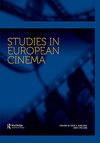The audience as creative contributor: examining the effects of implied sound and music in two versions of Nosferatu: A Symphony of Horror (1922)
IF 0.2
0 FILM, RADIO, TELEVISION
引用次数: 0
Abstract
ABSTRACT Since the release of Giorgio Moroder’s restoration of Metropolis in 1984, paired with his electronic musical score, it has become increasingly popular for composers to create new scores for silent films. Some scholars credit new musical scores with introducing younger generations to silent cinema. However, other critics argue that new scores make silent films less authentic. F.W. Murnau’s Nosferatu: A Symphony of Horror was initially released with an orchestral score by Hans Erdmann. This original score is still regularly used to accompany Murnau’s film when it is screened today and is contained on the Eureka Video home media releases of Nosferatu that feature the 2013 F.W. Murnau Stiftung restoration of the film. In 1997, composer James Bernard created a new score to accompany Photoplay Productions’ remaster of Enno Patalas’ 1995 Nosferatu restoration, which has since been paired with the BFI DVD and Blu-Ray releases of Nosferatu. This article examines the effects that Erdmann’s and Bernard’s musical accompaniments have on implied sound in Murnau’s film in the two aforementioned editions of Nosferatu. In particular, I focus on how audible and inaudible sound can affect the audience’s reception of, and creative engagement with, Nosferatu.作为创造性贡献者的观众:考察两个版本的《诺斯费拉图:恐怖交响曲》中隐含的声音和音乐的效果
摘要自从1984年乔治·莫罗德的《大都会》修复作品与他的电子乐谱一起发行以来,作曲家们为无声电影创作新的乐谱变得越来越受欢迎。一些学者认为,新的乐谱将年轻一代引入了无声电影。然而,其他评论家认为,新的配乐会降低无声电影的真实性。F.W.Murnau的《诺斯费拉图:恐怖交响曲》最初由Hans Erdmann以管弦乐配乐发行。当Murnau的电影今天上映时,这首原创配乐仍然经常被用来伴奏,并包含在Eureka Video的Nosferatu家庭媒体上,其中包括2013年F.W.Murnau基金会对电影的修复。1997年,作曲家詹姆斯·伯纳德创作了一首新的配乐,为Photoplay Productions翻拍的恩诺·帕塔拉斯1995年的《诺斯费拉图》配乐,该配乐后来与BFI DVD和蓝光版的《诺斯费拉图》配套发行。本文考察了埃尔德曼和伯纳德的音乐伴奏对上述两个版本的《诺斯费拉图》中莫电影中隐含声音的影响。特别是,我关注的是听得见和听不见的声音如何影响观众对Nosferatu的接受和创造性参与。
本文章由计算机程序翻译,如有差异,请以英文原文为准。
求助全文
约1分钟内获得全文
求助全文

 求助内容:
求助内容: 应助结果提醒方式:
应助结果提醒方式:


